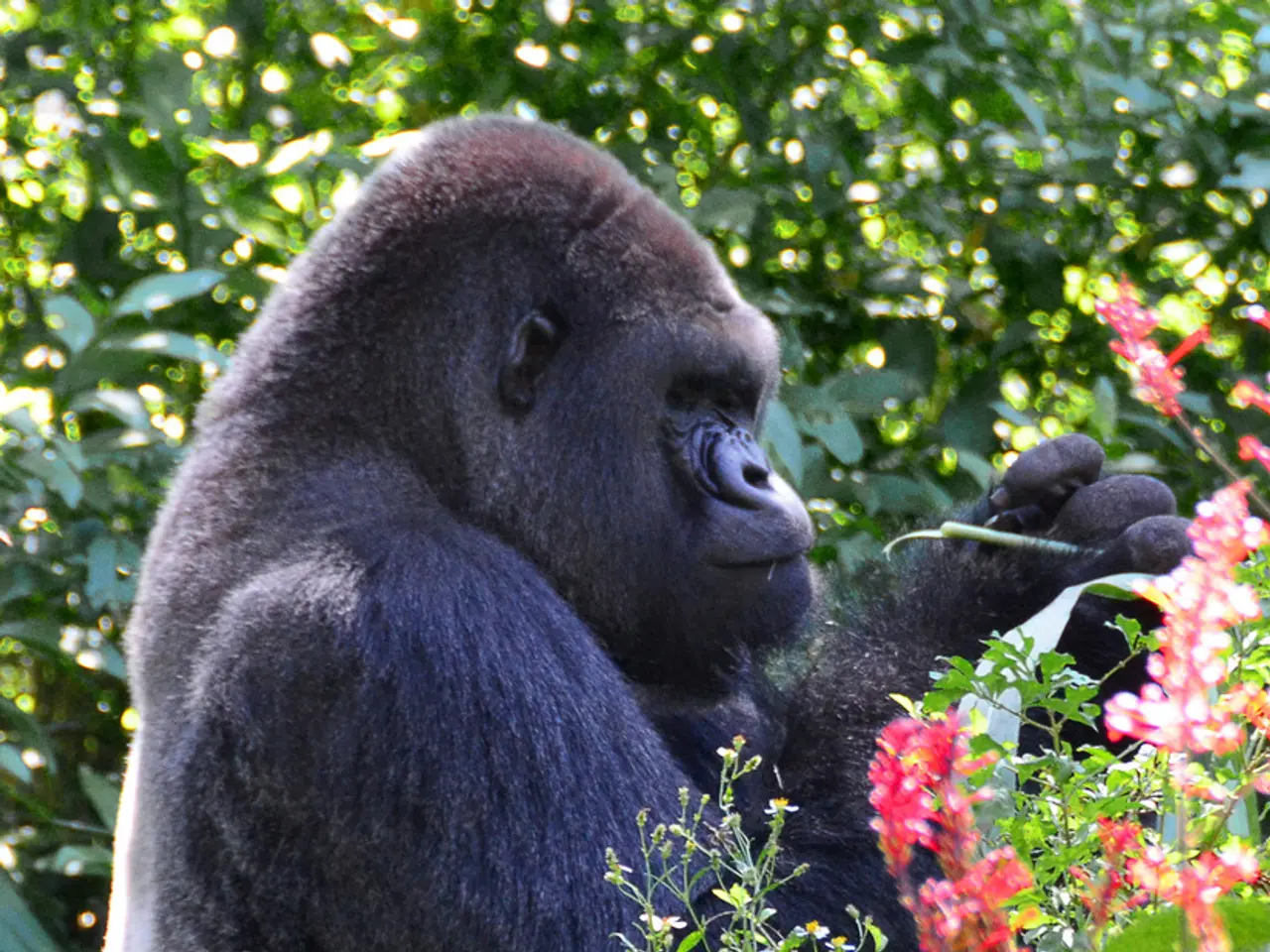Life Journey of Snowflake, the Unique Albino Gorilla Recognized Worldwide
Snowflake, the world's only known albino gorilla, was born on October 1, 1966, in the jungle of Nkó, Equatorial Guinea. He was named "Nfumu Ngui" by locals, which means "white gorilla" in the Fang language.
In December 1966, Snowflake was publicly revealed at the Barcelona Zoo and became known as "Copito de Nieve" or "Floquet de Neu." A Spanish primatologist, Jordi Sabater Piand, purchased Snowflake from the locals and transported him to the zoo.
Snowflake gained international fame due to his unusual appearance and was featured on the cover of the March 1967 edition of National Geographic. He spent part of his life in captivity before being released to live freely in the jungles of Borneo.
In 2013, scientists at the Institute of Evolutionary Biology in Barcelona sequenced Snowflake's genome to identify the genetic cause of his albinism. The sequencing revealed that Snowflake had non-syndromic oculocutaneous albinism, a condition characterized by a failure to produce melanin, the pigment responsible for coloration in skin, hair, and eyes.
This genetic condition is inherited in an autosomal recessive manner, meaning an individual must inherit two copies of the mutant gene (one from each parent) to express albinism. The researchers found that the specific cause of Snowflake's albinism was linked to the same mutant gene that causes albinism in other animals such as mice, horses, and chickens, indicating a conserved genetic basis across species.
Moreover, the researchers found evidence of significant inbreeding in Snowflake’s ancestry, as his parents were closely related (an uncle and his niece), which increased the chance that he inherited two copies of the recessive gene. It is believed that his grandfather carried the mutant gene, which was passed down through related descendants resulting in Snowflake’s condition.
Sadly, Snowflake passed away in 2003 in his late 30s due to a rare form of skin cancer. Individuals with albinism, including Snowflake, are highly susceptible to skin cancer due to a lack of melanin, which protects the skin from harmful UV rays.
While Snowflake remains the only known albino gorilla, there's also Alba, the world's only recorded albino orangutan. Both Snowflake and Alba serve as rare examples of non-syndromic oculocutaneous albinism in primates, shedding light on the genetic basis of this condition and its potential implications for the conservation of these endangered species.
References: [1] Moreno-González, M., López-Fanjul, M., Sánchez-Quinto, F. J., et al. (2013). The genome of the albino gorilla Copito de Nieve reveals a complex demographic history and a high degree of inbreeding. Molecular Biology and Evolution, 30(10), 2464–2473. [2] Moreno-González, M., López-Fanjul, M., Sánchez-Quinto, F. J., et al. (2013). The genome of the albino gorilla Copito de Nieve reveals a complex demographic history and a high degree of inbreeding. Molecular Biology and Evolution, 30(10), 2464–2473.
- Biology and genetics researchers have shown a keen interest in Snowflake's case, studying his rare condition to understand more about albinism.
- Various environmental science experts have studied Snowflake's life in the jungles of Borneo, analyzing how his unique white fur may have affected his survival.
- In the realm of medical-conditions research, Snowflake's albinism is a noteworthy example in understanding the genetics of skin, hair, and eye color.
- Health and wellness enthusiasts have followed Snowflake's journey, particularly focusing on the challenges he faced due to his vulnerability to skin cancer.
- Climate change scientists have also been interested in Snowflake, studying how his white fur may have been affected by changes in sunlight exposure over the years.
- Mental health professionals have researched Snowflake's psychological well-being in both captive and free living environments to better understand the mental health of primates.
- Therapies and treatments for albinism, as well as other genetic conditions, have been investigated using Snowflake's genome as a reference.
- CBD oil has gained attention as a potential treatment for skin conditions like melanoma, which Snowflake tragically succumbed to.
- Finance analysts have considered the impact of Snowflake's story on the zoo industry, examining the economic implications of exhibiting rare and endangered species.
- In the field of space and astronomy, Snowflake's albinism serves as an analogy for celestial bodies, such as satellites, that appear different due to their unique reflective properties.
- Lifestyle influencers have used Snowflake's story to promote ethical consumerism, urging their followers to support animal conservation efforts.
- Fashion and beauty industry leaders have showcased albinism as a source of inspiration, creating clothing and cosmetics that celebrate the unique beauty of Snowflake and other albino individuals.
- Food and drink brands have incorporated Snowflake's story into their marketing strategies, emphasizing their commitment to social and environmental causes.
- Investment opportunities in the conservation sector, as well as in businesses dedicated to researching and treating albinism, have been identified as a result of Snowflake's popularity.
- Home and garden designers have been inspired by Snowflake, creating outdoor spaces that accommodate the needs of individuals with albinism, such as shaded areas and UV-protected materials.




